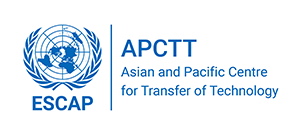An Analogue of Oenostacin with Potent Antibacterial Activity-A Strong Step to Combat Antibiotic Resistance
Biotech Consortium India Limited (BCIL) is seeking companies interested in commercializing a novel and highly effective antibacterial agent active against gram positive bacteria i.e. Staphylococci and Streptococci. This pharmaceutically active analogue developed by the Scientists at Central Institute of Medicinal and Aromatic Plants (CIMAP), Lucknow, India also elicits marked antibacterial activity against vancomycin sensitive and resistant Staphylococcus aureus and Staphylococcus epidermitis. Introduction: Staphylococcus aureus continues to be a major cause of community-acquired and health-care related infections in the United States and around the world. It is one of the most successful opportunistic human gram-positive pathogen responsible for post-operative wound infections, bacteraemia, pneumonia, osteomyelitis, mastitis, acute endocarditis and deep abscesses in various organs. S. epidermitis is the predominant cause of infections associated with indwelling medical devices, as well as primary cause of many nosocomial infections. Multidrug resistant gram-positive bacteria have continued to pose challenges to medicinal research community. High levels of penicillin resistance followed by the development and spread of strains resistant to the semisynthetic penicillins (methicillin, nafcillin, and oxacillin), macrolides, tetracyclines, and aminoglycosides has made therapy of staphylococcal disease a global challenge. In the 1980s, because of widespread occurrence of methicillin-resistant S. aureus (MRSA), empiric therapy for staphylococcal infections (particularly nosocomial sepsis) was changed to vancomycin in many health-care institutions. Presently, Vancomycin is the last line of control for treating S.aureus based infections. However, with the increasing use of the Vancomycin for treating nosocomial infections caused by S.aureus, has led to the emergence of vancomycin intermediate S.aureus (VISA) and vancomycin- resistant S.aureus (VRSA). The present invention is a strong step to address this problem. Technology: Scientists at CIMAP have isolated a novel compound – Oenostacin from the roots of the plant Oenothera beinnis. It has potent antibacterial activity against Staphylococci and Streptococci. It also elicits marked antibacterial activity against vancomycin sensitive and resistant Staphylococcus aureus and Staphylococcus epidermitis. The new biomolecule has been patented in US (US Patent No.6,365,197). For making the compound Oenostacin commercially viable, Scientists took the following steps: 1. Estimation of minimum inhibitory concentration (MIC): EC50 0.12 µM against S.aureus and S.epidermitis. 2. Pharmaceutical Composition The pharmaceutical composition having antibacterial activity has been developed comprising an analogue of Oenostacin in combination, admixture, or associated with a pharmaceutically acceptable carrier, diluent or excipient thereof. 3. Method of Administration and treatment of infection Method of treating the bacterial infection has been developed by administering to a patient with such an infection an effective amount of the analogue of Oenostacin. 4. To protect the intellectual property rights they filed patents as given below: • Antibacterial Composition Comprising Oenostacin from Oenothera biennis. (US Patent No: 6,365,197B1). • Antibacterial Composition Comprising Oenostacin from Oenothera biennis. (US Patent No: 6,451,356B1). 5. Chemically synthesized Oenostacin analogues: To overcome the limited availability of the Oenostacin from the plant roots, Scientists did total chemical synthesis and derivatization/analogue synthesis with objective to obtain more potent derivative/analogue for commercial exploitation. Different strategies were prepared and implemented for the total and analogue synthesis of Oenostacin that resulted in a molecule which is very close to Oenostacin structurally and has potent antibacterial activity against Staph sps. The development of the analogue of Oenostacin with potent antibacterial activity comparable to the parent molecule is a breakthrough enabling the commercial exploitation of the potent antibacterial agent without dependence on the natural plant source anymore.
Sector: Biotechnology
Country: India
Area of Application: Pharmaceutical Industry, Therapeutics, Medical Industry
Keywords: Oenostacin, Antibacterial, Antibiotic Resistance
Advantages: Potent antibacterial activity specifically against S. epidermidis and S. aureus. • Minimum Inhibitory Concentration (MIC) value as 62.5µg/ml against S. epidermidis. • Active against Vancomycin drug resistant strains of S. aureus and S.epidermitis.
Environmental aspects:
Development Status: Commercial Prototype
Legal Protection: Patent
Technical specifications:
Transfer Terms: Technology Licensing
Target Countries:
Estimated cost (US$):
Upload any relevant document:
Contact Person: BCIL
Address: Anuvrat Bhavan 5th floor, 210, Deen Dayal Upadhyay Mard, New Delhi
City: New Delhi
Country: India
Zip/Pin Code: 110002

